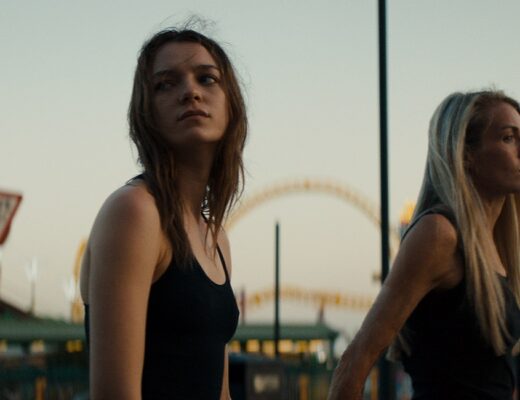Naomi Kawase’s 2014 romance drama Still the Water is never short on striking imagery. Set in Amami Ôshima, an island off the southern coast of the Japanese mainland, the film is overflowing with beautiful shots of crashing waves, misty mountains, and painterly sunsets. A particularly memorable sequence early on also captures main character Kyôko (Jun Yoshinga) diving along the lush seabed which surrounds the island, clad in her schoolgirl uniform. Kawase briefly suspends her in a twilight world between dream and reality, her underwater odyssey veering into the fantastical before she ultimately comes up for air, breaking the spell. When it comes to setting a mood, Kawase succeeds handsomely.
Narrative and character are another story. Described by Kawase herself as her “masterpiece,” ahead of its premiere at the 2014 Cannes Film Festival — “There is nothing I want more than the Palme d’Or,” she explained. “I have my eyes on nothing else.” — Still the Water plods along for two uneventful, dreary, and pompous hours. The characters don’t converse as much as they spout pseudo-philosophical questions at each other. “Why is it that people are born and die?” wonders Kyôko after telling her love interest, the mercurial Kaito (Nijiro Murakami), about her shaman mother Isa’s (Miyuki Matsuda) terminal illness, the exact nature of which isn’t disclosed.
Kawase’s preoccupations have not changed all that much since she chronicled life, love, and death in a rural community with her 1997 feature directorial debut, Suzaku — a film far more deserving of being called a masterpiece, for whatever that’s worth. Instead of letting Still the Water’s story unfurl organically in front of her documentarian’s gaze, the filmmaker strains to imbue every scene with meaning and a quotable, faux-deep line. A possible explanation for this: Kawase had, by this point, been nominated for the Palme d’Or a total of three times, so perhaps her naked ambition just got the better of her.
With its countless scenes accompanied by arpeggiated piano tinkering, Still the Water seems cynically designed to appeal to a more sentimental segment of the arthouse crowd. One would expect a director as accomplished as Kawase to somehow complicate the maudlin tale of young love, but the impact of the crime thriller-esque appearance of a dead body evaporates almost immediately, as the film puts it on the back burner. And even though Kaito’s trip to Tokyo to visit his father (Jun Murakami, Nijiro Murakami’s real-life father) introduces a welcome change of pace — the film finally feels unpretentious and natural — Kawase can’t help but cap off the sweet father-son bonding moment with a labored monologue on fate, delivered by the father who seems to shroud his bitterness over the divorce with Kaito’s mother in New Age philosophy.
Kyôko regularly turns to the eccentric fisherman Kamejiro (Fujio Tokita) for advice, his habit of espousing kooky ideas, which the film more or less treats as gospel, offering comfort to the young girl as she struggles to come to terms with her mother’s imminent death. Meanwhile, Isa, whose illness can only be described as being the mother of a headstrong teenager in a sad coming-of-age story-itis, spends most of the film in bed, regurgitating whatever well-worn ideas she picked up from the chief shaman.
Although Still the Water‘s natural beauty is unimpeachable, Kawase opts to juxtapose the island’s scenery with not one but two scenes of goats being slaughtered, both having their throats cut by a straight razor. It’s difficult to verify the authenticity of these scenes but they are framed as part of the island’s traditional rituals, so in light of Kawase’s semi-documentary approach and cultural differences with regards to the treatment of animals, their inclusion — real or not — can perhaps be forgiven. What’s harder to forgive is how the film tries to offset its overbearing dullness with hollow philosophical musings, in the process wasting both star Jun Yoshinga — who makes the most of the turgid script — and cinematographer Yutaka Yamazaki’s considerable talents.
Published as part of InRO Weekly — Volume 1, Issue 9.







